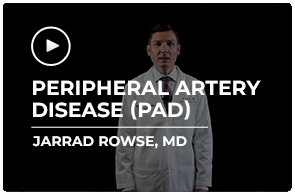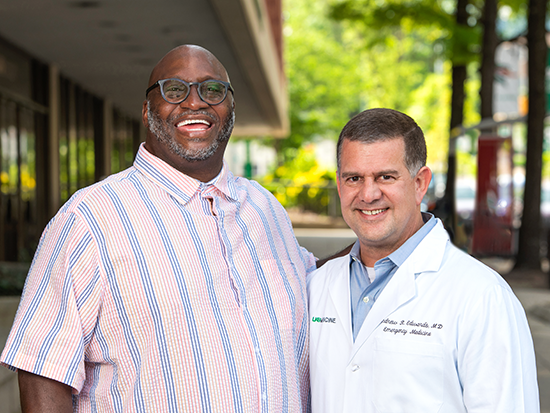Peripheral artery disease (PAD) is a circulatory condition caused by narrowed arteries that restricts blood flow. The reduced flow of blood to the body’s extremities, particularly the legs, results in pain and discomfort, especially when walking. The condition is sometimes indicative of a more widespread circulatory problem caused by the buildup of fatty deposits in the arteries. This is particularly dangerous because it also may reduce blood flow to vital organs, such as the kidneys, heart, and brain. Factors such as smoking, diabetes, high blood pressure, and high cholesterol increase the risk of developing PAD. Approximately 8 million Americans suffer from the condition, which becomes increasingly common with age. Treatment is frequently based on lifestyle changes, including diet and exercise.
At UAB Medicine, cardiovascular specialists provide expert treatment of multiple circulatory conditions using a broad range of services including medical therapy, endovascular therapy, and surgical reconstruction. When you choose UAB to care for your vascular condition, you gain access to physicians who have a highly successful track record for treating some of the most complex vascular conditions and who practice medicine with the latest cutting-edge treatment options. We maintain a robust research area that also manages clinical trials, which often lead to new modes of advanced therapy long before these treatments are available to the general public.
UAB’s cardiovascular physicians include specialty-trained surgeons and medical doctors, offering both open and endovascular surgery options. These experts collaborate in your care, which is optimized with the most innovative treatments available in Alabama and the most modern facilities and equipment. They work with each patient to arrive at a specific diagnosis and treatment plan based on medical history, physical exam, and non-invasive testing including ultrasound, Doppler with plethysmography, CT scans, and magnetic resonance angiography (MRA).
In severe cases of peripheral artery disease (PAD), some patients have such poor blood flow that they may require an amputation. The need for amputation often can be avoided by early recognition of PAD, changes in lifestyle habits such as quitting smoking, and appropriate early treatment by qualified specialists to improve blood flow to the lower limbs. A wide range of specialists work together through the UAB Advanced Limb Preservation program to prevent amputation, preserve maximum function in the lower limbs in patients with PAD, and treat associated medical conditions such as diabetes that can increase the risk of amputation.
Videos
Resources
Clinical Trials
Speak to your physician about your options and browse the link below for more information





